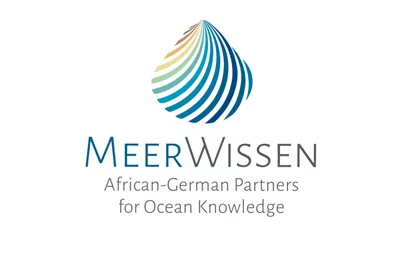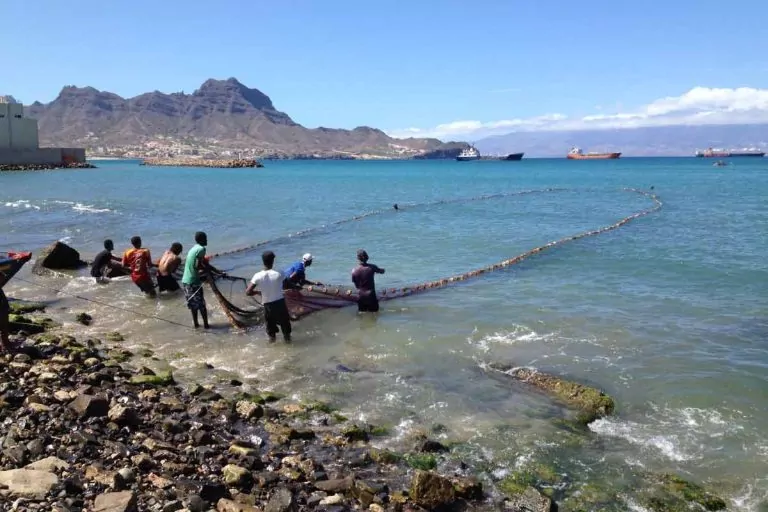Impact Story
Coastal Ecosystem Monitoring in Cabo Verde (CEM-CV)
Developing a blueprint for coastal ecosystem monitoring based on the needs of local stakeholders and policymakers.
The livelihood of many people in West Africa depends on healthy marine ecosystems. In the small island state of Cabo Verde, the pressure on such ecosystems grows exceedingly due to multiple human-induced factors. The use of coastal areas through the development of tourism and the fishing industry is increasing. However, a sustainable management of marine ecosystems in Cabo Verde is challenging because of a lack of systematic and coherent coastal marine observations. The project CEM-CV aims at the development of a blueprint for a coastal ecosystem monitoring program following an approach that includes the relevant stakeholders and policymakers throughout the whole process.
What unique issue is CEM-CV addressing?
The lack of scientific data and holistic monitoring of the coastal ecosystems in Cabo Verde hinders science-based policy and decision-making, as well as the consideration of the needs of local stakeholders.
The project CEM-CV seeks to advance and apply the monitoring of coastal ecosystems in two ways: By developing human capacity at stakeholder level, strengthening university programs, and enhancing institutional capacity while improving data accessibility, and by providing policymakers with valuable input for decision-making processes based on scientific evidence. This is carried out in a co-design approach by involving relevant stakeholders and policymakers in the blueprint process from the beginning, enabling all stakeholders to lead scientific input to practical application.
CEM-CV’s strong partnerships
- GEOMAR Helmholtz Centre for Ocean Research Kiel, Germany
- UTA – Universidade Técnica do Atlântico, Cabo Verde
- IMar – Instituto do Mar in Mindelo, Cabo Verde
- TI-SF – Thünen Institute for Sea Fisheries, Germany
- CAU – University of Kiel, Germany
- WASCAL master research program on “Climate Change and Marine Sciences”, hosted by UTA in Cabo Verde
What has been achieved?
CEM-CV has
- organised a variety of stakeholder workshops and multiple public events at local and national level to foster a dialogue between local stakeholders, policymakers and scientists.
- conducted a pilot multi-platform field survey to determine environmental baselines about the local coastal ecosystem.
- introduced a citizen science approach in close collaboration with local fishing communities involving community-based data collection via a smartphone app.
- trained local scientists, technicians, and students in new scientific technologies to carry out independent surveys.
What else has CEM-CV achieved?
CEM-CV has also
- raised awareness of the need for a sustainable and systematic monitoring program in Cabo Verde.
- collected important information from stakeholders on priorities to be included in a potential monitoring system in the future.
- intensified transdisciplinary collaboration between involved CEM-CV institutions, authorities like the Cabo Verdean Coast Guard and local NGOs.
- initiated a stronger collaboration and exchange between countries in the region.
In what way has CEM-CV contributed to local communities in Cabo Verde?
Through the work of CEM-CV local stakeholders are trained in data collection and monitoring methods, play an active role in researching their marine backyards and can contribute to the groundwork of science-based ocean governance. The early engagement of different protagonists has fostered a sense of ownership and helped to build trust in a successful collaboration. One of the most important outcomes of the project was the involvement and commitment of the Cape Verdean fishermen, who despite a low level of education and strongly established customs, accepted and assimilated new knowledge and habits and adopted the collection and reporting of their daily catch data.
The project CEM_CV pursued the goal to integrate local communities into the development of a coastal monitoring system that responds to their needs. Local stakeholders have been engaged in the project through successful co-design and co-production.
CEM-CV published scientific papers, reports and master theses on coastal ecosystem monitoring and digital technologies.
CEM-CV convened stakeholders from a range of target groups in Cabo Verde and beyond, including policymakers from national ministries and authorities, fisheries scientists and community representatives and students.
How does CEM-CV support the national and regional government in solving societal challenges?
CEM-CV aimed to develop and provide a monitoring system that can be used as scientific input into policy and decision-making processes, and to achieve standards for ecosystem monitoring and management in an archipelago ecosystem such as Cabo Verde.
Bringing the beneficiaries of the project together to discuss scientific issues is a very important step in identifying problems and the best approach to address and resolve them. In this way, the project promotes a basis for the conservation of marine ecosystems that meet the needs of fishermen, local scientists, authorities and NGOs, and not least policymakers and representatives from the Ministry of the Sea who plan to continue the science-policy dialogue with the goal to establish regular coastal ecosystem monitoring in Cabo Verde in the near future.

